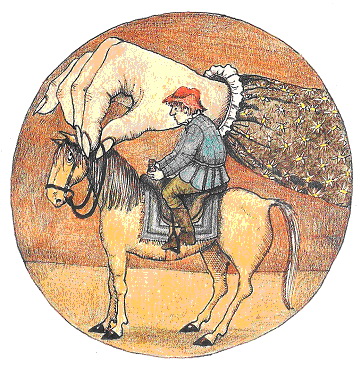
by DonnaGibbs | Mar 17, 2016 | Books and Children
Young children take time to learn whether things are living or non-living, real or pretend. In their world these categories are not yet well defined. It may make for a world that has more exciting, even magical, possibilities but it may also at times be more bewildering, frightening or threatening.
Adults bring to picture books a well-defined set of understandings about how the world works and how the picture book format interprets experience. It takes considerable time for a young child to acquire a similar kind of understanding and ‘background’ knowledge.
They may know, for example, at one level that illustrations aren’t real and that they represent things from the real world. But at another level they believe that the characters or animals in their books are real. ‘Where did the tiger go?’ asked a boy at kindergarten yesterday when I had just finished reading The Tiger who came to tea. For him, that tiger was out there somewhere. He might even come to visit his house and stay for tea!
Young children take time to learn how illustrations represent things. Adults understand that a partial illustration or a side view of, say, a fox represents the whole fox. A child on the other hand will ask ‘Where are his other two legs?’ and turn over the page to see if they are on the back of it. When I was reading Noah’s Ark to my daughter, Juliet, many moons ago, she thought the ostrich, who had only one leg showing, ‘must have his other leg at the animal hospital where they fix legs.’ (I only remember this because I kept a diary of our reading when she was three until she turned five.)
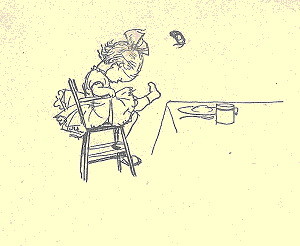
‘What’s the matter with Mary Jane?’ from When we were very young by A.A. Milne. Illustration by Ernest H. Shepard
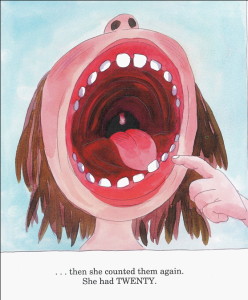
From I want my tooth! by Tony Ross (A Little Princess Story)
A child’s background and experience can also colour what they see. As a child I was sure that the thing buzzing around Mary Jane’s head was a fly. As an adult I came to realise it was her shoe she’d kicked off because of that rice pudding. This had never occurred to me as a way of venting my frustrations as a child though I am sure I hated rice pudding just as much as Mary Jane.
Size in illustrations is another convention that needs to be understood. Children do not always recognise the rules of perspective, for example. A figure who is small and a long way off may, in fact, be larger than a figure in the foreground. Very confusing if you don’t know the rules.
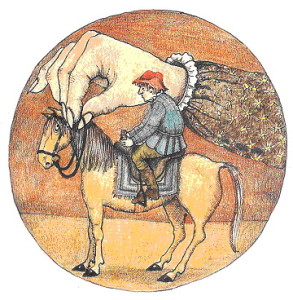
From The Helen Oxenbury Nursery Rhyme Book. Er . . is that a real horse?
Size is also used for other purposes than representing reality in children’s books. It can draw attention to something as does this wonderful illustration from I want my tooth by Tony Ross. The Little Princess’s mouth and teeth fill the left hand page yet on the facing page her mouth is the same size as everyone else’s. Size exaggerates, distorts, creates fear – it achieves all sorts of things in picture books. Children respond enthusiastically to these techniques without necessarily understanding them.
Young children will not yet know the meaning of many of the words they hear when listening to a story. They may not understand enough to ask for meanings and it may take time for them to recognise what they don’t know and to learn how to ask. This plays some part in why children love to hear the same story over and over. As you know, young children love repetition, rather more than you do! ‘Repetition Rules’ has more to say on this subject.
Knowing that each part of a story contributes to the whole takes time for a child to appreciate. It isn’t immediately obvious to a child that a story has a beginning,a middle and an end. After all, many of their earliest board books are not structured in this way. For reasons of their own, young children may be more impressed with parts of a story or its pictures than with the story as a whole.
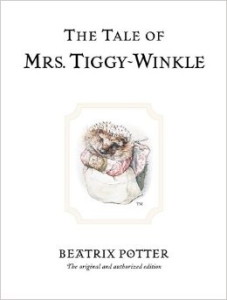 Children also notice things in a picture book that an adult may not notice or find unimportant. They are attuned to illustrations in ways it may be hard for us to anticipate. I recall, for example, my daughter’s obsession with the fate of a bird that had nothing at all to do with the plot of the book I was reading her, Mrs Tiggiwinkle by Beatrix Potter. At each new page she would ask ‘Where is that bird ? What is he doing now?’ It is disconcerting for the reader but it helps if you understand that a child’s logic is often quite quite different from your own.
Children also notice things in a picture book that an adult may not notice or find unimportant. They are attuned to illustrations in ways it may be hard for us to anticipate. I recall, for example, my daughter’s obsession with the fate of a bird that had nothing at all to do with the plot of the book I was reading her, Mrs Tiggiwinkle by Beatrix Potter. At each new page she would ask ‘Where is that bird ? What is he doing now?’ It is disconcerting for the reader but it helps if you understand that a child’s logic is often quite quite different from your own.
Children need time to come to grasp the concepts that shape what we hear and see which we take for granted. They will find their own way, and they don’t need to be hurried, but it does help if we can support them along the way by understanding the complex processes involved.
Do these observations chime with any you have made? Comments most welcome.
Future blog topics: Please send any topics you’d like me to talk about either by posting here or by emailing me your thoughts (gibbs.donna@gmail.com/).
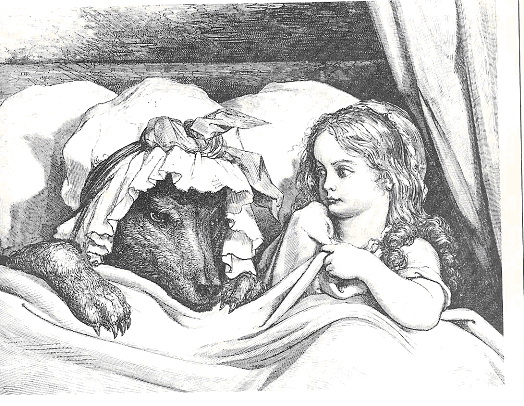
by DonnaGibbs | Mar 9, 2016 | Books and Children
Does it matter which version of a classic story you read to your child? Well – yes and no. You can be fairly sure the time tested magic of these tales, as long as age appropriate, will probably spread their enchantment, whichever the version. But there is more to it.
What started me thinking about this was some additional suggestions for popular books for two and a half year olds that came my way after my last post:
The Gingerbread Man
The Three Billy Goats Gruff
The Three Bears
Little Red Riding Hood
These classics, mostly originating as oral tales, come in many written versions. Different story tellers have told and illustrated the tales in different ways over time. Did you know that Goldilocks, for example, was originally a fox, not a girl, in earlier versions of the story? If you want to learn more about changes in these tales, dip into Iona and Peter Opie’s book, The Classic Fairy Tales. It is a fascinating study.
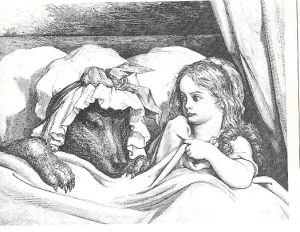
Dore’s illustration of Red Riding Hood, 1872, from the Opie’s Classic Fairy Tales.
Modern retellings of classic tales with a wide range of illustration styles continue to be produced. Call up Google images and type in a title or a character’s name to see what I mean.
Each version of a classic tale, through its choice of words and style of illustration, tells a different story. Some wordings are so beautifully crafted that you find yourself slipping into the forest with the characters, pausing there wide-eyed in delicious fear, making judgements and weighing up the possibilities. Other writers tell their stories more prosaically leaving a reader’s senses and empathies unengaged.
It is not only the words of the stories that carry values, create a moral world and play with stereotypes. For example, if Goldilocks lives up to her name and is pictured as the traditionally beautiful golden long-haired girl (as she is in the illustration below), then she is somehow made into a virtuous heroine with right on her side – even though she is the one to break into the three bear’s cottage and steal their food!

From Raphael Tuck’s ‘Combined Expanding Toy and Painting book series.’ c 1900
If, on the other hand, she is pictured as a dumpy, curly haired miss, with very poor dress sense, the story changes. The bears wouldn’t stand a chance against her! You can imagine this Goldilocks giving the door a good bang or even a kick, and shouting loudly, ‘Is anyone there? I’m hungry.’ Same story, but very different messages being sent through the illustrations.
So, is it ok to stick with a Disney version of one of these famous tales. Probably not. Children deserve to hear well written, well illustrated, age appropriate versions of classic tales. I wouldn’t avoid a Disney version but reading different versions at different times seems to me a good option. After all, children must to learn to discriminate for themselves. And it’s good for children to learn there are different ways of telling – a vital understanding that takes time to absorb and a concept on which many other concepts depend.
In my experience, children listening to classic tales become quite still and quiet. There is a special quality to their silence. You can actually see the magic of the story take hold. Have you found this? Are there any versions of classic tales you would recommend?

A different kind of Goldilocks.
* * * * * * * * *
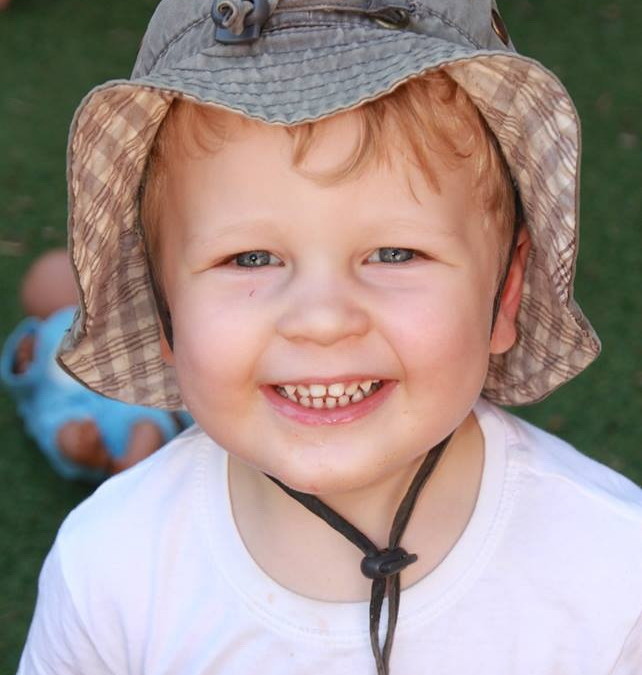
by DonnaGibbs | Feb 25, 2016 | Books and Children
I was asked this week if I could recommend a book for a two and a half year old Canadian boy with a Dutch mum and Afrikaans dad.
I decided to ask my little friend, Quinn, who is about the right age, which are his favourite books. With the help of his mum, Quinn listed his top four.
1 Where is the green sheep, Judy Horacek and Mem Fox. (These authors have a new book out too that looks appealing– This and That. )
2 The Tiger who came to tea, Judith Kerr.
3 We are going on a bear hunt, Michael Rosen.
4 Dig Dig digging, Margaret Mayo and Alex Ayliffe.
I think the children in my Kindy group, where I read as a volunteer, would agree with Quinn’s choices. They also like:
5 The Terrible Plop, Ursula Dubosarsky and illos by Andrew Joyner
6 The very hungry caterpillar, Eric Carle
7 The Grufallo, Julia Donaldson and Axel Scheffler, and
8 Guess how much I love you, Sam McBratney
9 The cat in the hat Dr Seuss, and
10 The Hairy Mclary books, Lynley Dodd?
Do you have any suggestions?
A few observations
The books children most enjoy are not necessarily the books adults would choose for them. For example, I disliked Where is the green sheep when I first read it. Yet, like Quinn, children just love this book. It is probably better to choose books that are popular with children rather than to follow our own tastes (well, sometimes anyway).
- The books children most enjoy are not necessarily the books adults would choose for them. For example, I disliked Where is the green sheep when I first read it. Yet, like Quinn, children just love this book. It is probably better to choose books that are popular with children rather than to follow our own tastes (well, sometimes anyway).
- Repetition, rhyme, refrains and a catchy rhythm (evident in most of these choices) are a sure fire success. This age group loves to join in a refrain, anticipate words, make noises and generally be rowdy and involved. Books with these elements have strong links with the nursery rhymes that many children know and love from a very young age.
- An element of fear (along as the danger is overcome) is another favourite ingredient. Children love a story that reveals increasing danger –you see it in their body language and the expressions on their faces!
- No single illustration style is a winner. Big and brightly coloured works well but so do many other styles. It is more to do with how the illustration works with the story.
I noticed that there are YouTube and other electronic readings of most of these books available online such as Michael Rosen’s telling of his We are going on a bear hunt (See https://www.youtube.com/watch?v=0gyI6ykDwds). But, generally speaking, the online versions offer an inferior experience to that of reading the book. Have you come across any worth knowing about? Or do you avoid them?
So – I haven’t really answered the question I was asked. But I have tried to suggest what to look out for when you are in a library or a bookshop trying to choose a book for a two and a half year old. And that’s half the fun, of course!
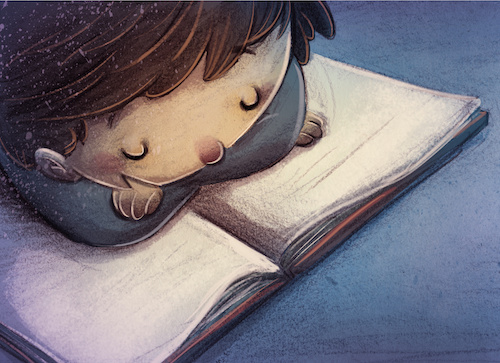
by DonnaGibbs | Aug 30, 2015 | Books and Children
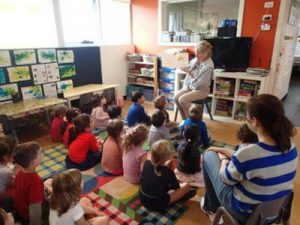 I read picture books at a local kindergarten once a week. I love to do this and wonder why I didn’t begin years ago.
I read picture books at a local kindergarten once a week. I love to do this and wonder why I didn’t begin years ago.
It is such a pleasure. Children love stories and love being read to. Seeing their keen, eager faces waiting to see what I’ve chosen to read to them is very encouraging. Their responses are enthusiastic and immediate – intense concentration, loud laughter, impulsive comments.
I have the pleasure of choosing books each week and anticipating how they will be received by the children. I usually read two or three at a session and try to vary them – a mad, comical tale and then a quiet, thoughtful story, perhaps. I also often include a story we have had at an earlier session. The familiarity of hearing a well-known or well-loved story is something children seem to find comforting or reassuring.





 Children also notice things in a picture book that an adult may not notice or find unimportant. They are attuned to illustrations in ways it may be hard for us to anticipate. I recall, for example, my daughter’s obsession with the fate of a bird that had nothing at all to do with the plot of the book I was reading her, Mrs Tiggiwinkle by Beatrix Potter. At each new page she would ask ‘Where is that bird ? What is he doing now?’ It is disconcerting for the reader but it helps if you understand that a child’s logic is often quite quite different from your own.
Children also notice things in a picture book that an adult may not notice or find unimportant. They are attuned to illustrations in ways it may be hard for us to anticipate. I recall, for example, my daughter’s obsession with the fate of a bird that had nothing at all to do with the plot of the book I was reading her, Mrs Tiggiwinkle by Beatrix Potter. At each new page she would ask ‘Where is that bird ? What is he doing now?’ It is disconcerting for the reader but it helps if you understand that a child’s logic is often quite quite different from your own.





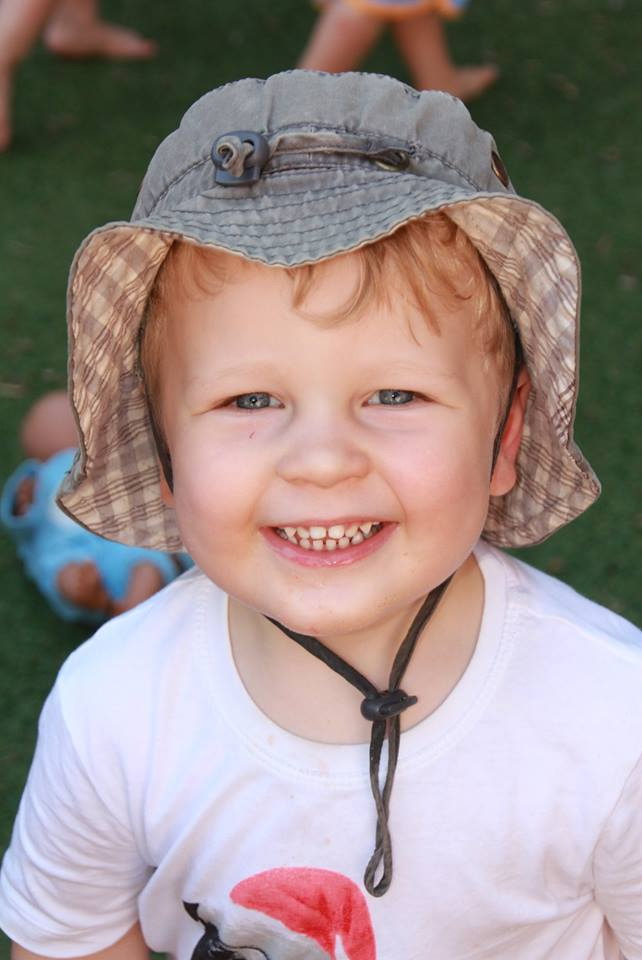


 I read picture books at a local kindergarten once a week. I love to do this and wonder why I didn’t begin years ago.
I read picture books at a local kindergarten once a week. I love to do this and wonder why I didn’t begin years ago.
Recent Comments